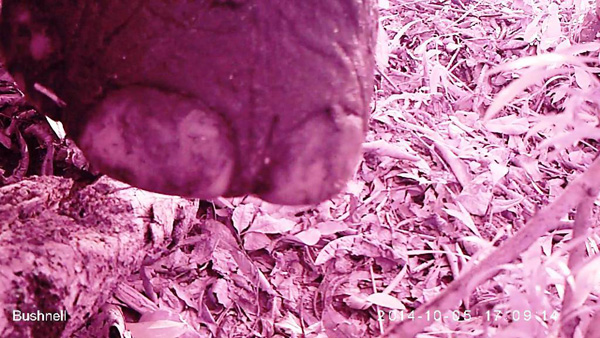Camera traps are revolutionizing the world of conservation, helping researchers document elusive wildlife, record rarely-observed animal behavior, catch poachers, and identify high conservation value areas. The non-invasive tool also offers incredible marketing value, showcasing the sometimes little-seen targets of conservation efforts.
In recognition of the conservation value of camera trapping and to ring in the New Year, today the Wildlife Conservation Society (WCS) released a list of its top 10 camera trap photos for 2014. The images come from WCS’s global network of field sites and programs, with subjects ranging from giant anteaters in Peru to an elephant in Gabon to tigers in India.
All the images and captions are courtesy of WCS.
Enjoy!

A pronghorn strikes a stately pose in the Greater Yellowstone Ecosystem where WCS is studying the effects of exurban development on wildlife. CREDIT: WCS North America Program

A baby giant anteater hitches a ride on its mother’s back in Manu National Park, Peru, where WCS does landscape conservation work. CREDIT: SERNAP/WCS

An ocelot inspects a camera trap station in Manu National Park, Peru. CREDIT: SERNAP/WCS

A ghostly-looking polar bear checks out a muskoxen skull on Russia’s Wrangell Island where WCS collaborated with Russian scientists earlier this year. CREDIT: WCS/Joel Berger

A strolling leopard in India’s Bandipur Tiger Reserve seems to have a camera trap strapped to its back (it’s actually on a stand). CREDIT: WCS India

A brown fish owl decided to briefly touch down in India’s Bhadra Tiger Reserve. CREDIT: WCS India

A curious sloth bear mother and its two cubs pay a visit in India’s Bhadra Tiger Reserve. CREDIT: WCS India

A tiger and its curly-tailed cub on a stroll in India’s Bhadra Tiger Reserve where WCS has worked since the 1980s, and tiger numbers have rebounded. CREDIT: WCS India

A muntjak takes a selfie in India’s Bhadra Tiger Reserve – tiger prey species have doubled in recent years due to good management. CREDIT: WCS India

No, not a pink elephant, just a damaged camera trap after a forest elephant got through with it in Gabon’s Lope National Park in Central Africa. CREDIT: WCS Gabon